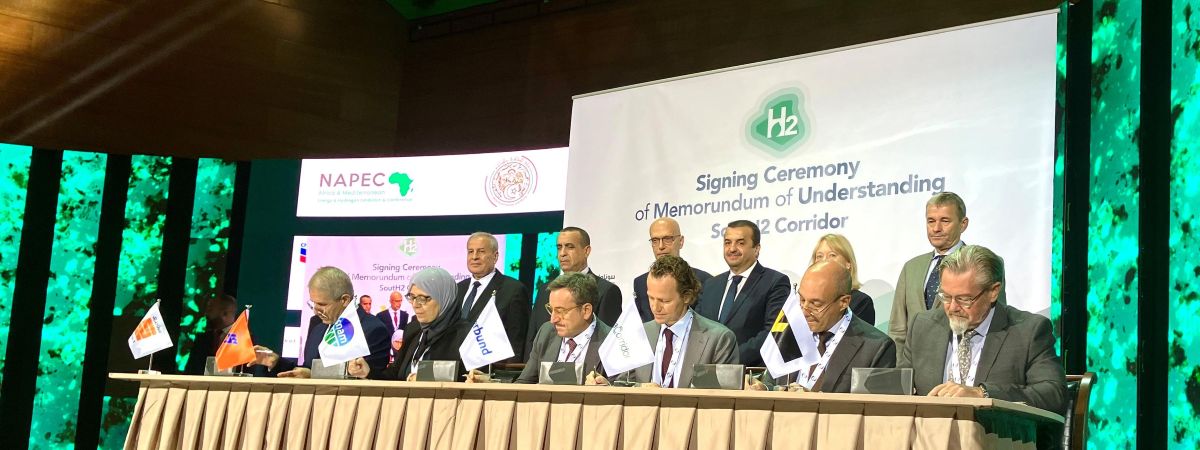Exploring a Green Hydrogen Partnership: VNG and Partners to Import from Algeria via SoutH2 Corridor
Key Ideas
- VNG, Sonatrach, Sonelgaz, Snam, SeaCorridor, and Verbund signed an MoU to explore large-scale hydrogen production in Algeria for export to Italy, Austria, and Germany via the SoutH2 Corridor.
- The project aims to diversify supply portfolios, enhance future security with decarbonized gases, and contribute to the European hydrogen economy through international cooperation.
- The SoutH2 Corridor, part of the European Hydrogen Backbone, will utilize repurposed pipelines for cost-effective transportation of over 4 million tonnes of hydrogen annually from North Africa to central Europe.
- Expected to be operational by 2030, the corridor will facilitate the flow of renewable hydrogen to meet demand clusters in Italy, Austria, and Germany, supporting domestic production and European energy security.
Germany's VNG, in partnership with Algeria's Sonatrach and Sonelgaz, Italy's Snam and SeaCorridor, and Austria's Verbund, has signed a memorandum of understanding to explore the feasibility of a project for large-scale hydrogen production in Algeria. The aim is to export the green hydrogen via the planned SoutH2 Corridor to Italy, Austria, and Germany. The agreement outlines cooperation among the companies for joint studies on the technical and economic aspects of the project.
Hans-Joachim Polk from VNG highlighted the significance of the partnership, emphasizing Algeria's potential in green hydrogen production. The project intends to diversify supply portfolios, enhance future energy security with decarbonized gases, and promote international cooperation in advancing the hydrogen economy in Europe.
The SoutH2 Corridor, a 3,300-kilometer pipeline corridor, is part of the European Hydrogen Backbone and aims to facilitate the import of more than 4 million tonnes of hydrogen annually from North Africa to central Europe. By repurposing existing pipelines, the project plans to ensure cost-effective transportation of renewable hydrogen, sourced from favorable locations with wind and solar energy in North Africa.
The partners have secured support from producers for around 2.5 million tonnes per annum of renewable hydrogen, which will be transported to demand clusters in Italy, Austria, and Germany. The corridor is expected to be fully operational by 2030, supporting domestic production and enhancing energy security in Europe. Various PCI projects under the SoutH2 Corridor, led by different transmission system operators, are set to contribute to the successful establishment of this critical infrastructure for the hydrogen economy.
Topics
Green Hydrogen
Renewable Energy
Partnership
International Cooperation
Supply Chain
Memorandum Of Understanding
European Infrastructure
Pipeline Corridor
Future Energy Source
Latest News
